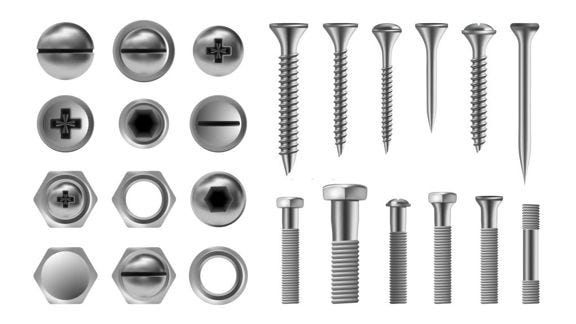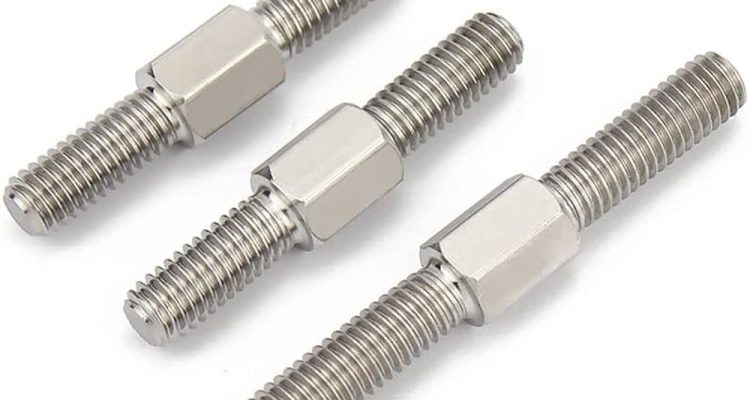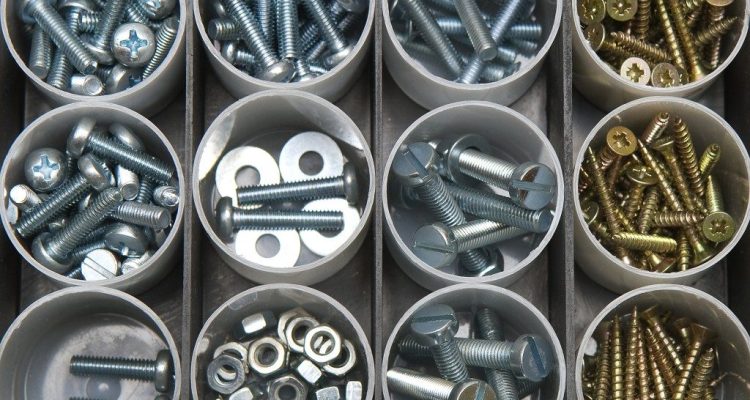
5 Benefits Of Using Stainless Steel Rivets
Stainless steel rivets offer excellent durability, corrosion resistance, aesthetic appeal, easy maintenance, and versatility for various applications
Excellent Durability and Strength
Stainless steel is an excellent rivet material due to its high resilience and strength what makes it indispensable in applications where sturdy structures are a must. Alloy compositions (for example, chromium, nickel, molybdenum) that provide mechanical properties and resistance to deformation also are used in the aided manufacturing of these screws.
Chemical Analysis and Mechanical Characteristics
Most common grades and compositions of stainless steel rivets have tensile strengths somewhere between 500 MPa and 2000 MPa. Grade 304 stainless steel, utilized for the rivets, has roughly 18% chromium and about 8% nickel. This combination offers excellent strength, as well as substantially enhances the toughness of the material, enabling it to carry extreme loads and withstand severe mechanical stress without fracturing.
Studies and Full- Throttle Performance Review
Stainless Steel Rivets – These are used in the construction of the iconic skyscrapers and bridges to ensure that all the components hold together and the structures are under adhesive together under the weight and dynamic forces that such structures are subjected to. One such example is in the construction of the Petronas Towers located in KualaLumpur, where stainless steel rivets were used for structural strength in its twin towerswhich reach 452 meters/almost 2,000 feet off the ground.
Safety and reliability effect
Stainless steel rivets are known to be highly reliable and are used extensively in safety-critical applications such as automotive and aerospace engineering. These rivets are used for the manufacturing of aircraft as the ability of these rivets to hold up their strength at high altitudes and variable temperature conditions helps in ensuring the safety and performance of an aircraft in the aerospace sector. Tests on aircraft structures demonstrate that even after thousands of hours of flight in differing atmospheric pressures and temperatures the stainless steel rivets remain intact and do not lose their strength.
Economic Benefits
Although stainless steel rivets can be more expensive up front than alternatives such as aluminum, stronger, more durable rivets can provide cost savings long-term in relation to maintenance and fewer replacement parts. This makes them a cost-effective choice in long-term, high-volume projects where the performance and integrity of the fastening solutions are central.

Corrosion Resistance
Where maintaining a resistance to corrosion is absolutely necessary, stainless steel rivets tend to perform the best. Its characteristics, such as a high percentage of chromium, make stainless steel inherently noncorrosive and resistant to rusting and other forms of wear. This feature allows structural integrity and long life in numerous uses.
Corrosion Resistant Is That Chromium Oxide Layer
Stainless steel rivets have a high corrosion resistance thanks to a layer of chromium oxide that forms on the surface. When chromium (10.5% of the alloy) is exposed to air or water, it automatically forms this layer. Below this invisible layer, this safeguarding layer does not let the water vapour or air react with the metal which is excellent because if these reactions happen it will encourage oxidation. Also that is why this process is more effective in the places where there is a high moisture level such as marine environments and coastal areas.
Corrosion resistance has industry applications
Types of Rivets: Stainless steel rivets are commonly used in the marine construction where docks, ships and other structures with seawater exposure to join sheets. Most metals are highly corrosive by the saltwater, but if we use stainless steel it will continually hold his integrity, making these constructions almost indestructible. A typical example is the use of stainless steel rivets in the hull material of boats and ships to prevent rust-related structural failures.
selective corrosion resistance
Studies & tests have proven that over the course of decades, stainless steel rivets can survive hazardous conditions and will not deplete like normal rivets. Stainless steel rivets performed even better; salt-mist tested for more than 5000 hours, no corrosion was noted, vs. within hundreds of hours for styrene die-cast, aluminium, etc, had lost 30%.-40% of its weight due to decay.
resistance has an economic impact
The longevity and decreased frequency of maintenance or replacement of stainless steel rivets can provide significant cost savings. This is especially apparent in maintenance-heavy infrastructure applications – from bridges to public buildings – where repair costs can be significant. Corrosion-resistant rivets reduce these costs, with ROI well surpassing the cost difference from less resistant materials.
Aesthetic Appeal
Where stainless steel rivets provide strength, they also bring forward the form factor of the project. Their smooth and shiny look can add a lot to interior and exterior designs.
Visual Impact in Architecture
One of its biggest pluses is that it contributes to the neat and sleek look modern architecture designs have, with stainless steel rivets being used overall. They are typically found in public view inside or outdoors on buildings and structures where aesthetics are important. This choice can be a good way to allow glass or polished concrete, both popular modern building materials, space to stand on their own throughout your home with cohesive, visually pleasing surroundings. Stainless steel rivets have even been utilized in the titanic curved titanium panels of the Guggenheim Museum Bilbao, highlighting the bilbao museum’s, modern/ scale like appearance(dto).
Consistency in Design
Stainless steel rivets offer a uniform appearance for projects that must be exact and are symmetrical. Their durability in resisting stains and taint supports long term aesthetic appeal. This is an attribute that is especially desirable for premium consumer products, such as electronics or automotive, in which every single detail matters to make a final product designed cohesively and impressively.
Customization Options
In addition, stainless steel rivets are also available in different finishes such as matte, satin, and mirror polish, all of which make it easy for designers and design engineers to choose the finish that suits the style and needs of their products. Every finish reflects a different formation of sheen and texture that opens a world of design opportunities. A great example of this is represented by mirror-polished finishes, which are prevalent in high-end applications such as kitchen appliances, due to their smooth and modern aesthetic qualities.
Impact on Product Value
The appearance of a stainless steel rivet can also help to improve the aesthetically qualities of a product, and enhance its perceived value. They suggest an indication of higher quality and longevity, just as products with visible stainless fixings, rivets for instance, are generally accepted as. For these perceptions, clients more satisfied with your service, and it will allow you to a premium pricing strategy.
Easy Maintenance
Type 304 stainless rivets are known for their need for little maintenance, and are a good time and money saving choice in a lot of applications. In addition, their resistance to corrosion and other environmental wear will lower the frequency of replacement and upkeep that these devices require.
Resistant to Environmental Factors
This makes sense, since one of the most obvious motivations to use stainless steel for making rivets is due to the fact that they can withstand the nature – both basic and aggressive – that constantly barrage them. This property obviates the requirement of protective coatings or treatments which may be needed for some other materials. This makes them ideal for outdoor construction projects like bridges and marine structures where stainless steel rivets will not rust, requiring some materials to be repainted and sealed every few years.
Longevity and Durability
The long lasting nature of stainless steel rivets is a key factor in their single Maintenance. They are resistant to deforming, breaking, or wearing out, so products and buildings in which they have been used last longer and suffer from fewer problems. Compared with other materials that may require replacement or repairs in only a few years, stainless steel elements in structural applications have a lifespan of up to 100 years with relatively low maintenance, as Studies have shown.
Cleaning and Care
Stainless steel rivets do not stain and are easy to clean, simply requiring basic cleaning solutions and a little elbow grease to maintain their look. This is very useful in sectors in which cleanliness is important, e.g. in food and medical equipment sectors. A simple wiping with a soft detergent or purified water will be enough to remove the dirt but keep the rivets in good shape.
Cost-Effectiveness Over Time
Although the price may be higher than other options to start with, stainless steel rivets are virtually maintenance-free, keeping labor costs down over time. Stainless steel rivets provide health care facilities and infrastructure spend less on upkeep, which results in more simple budgeting and fewer surprises in terms of repairs.

Suitable for a Variety of Applications
Experience the strength and versatility of stainless steel rivets, offering enough diversity to cater to most applications and industries. This is all due to its mechanical characteristics, resistance to corrosion and the facility to adapt it aesthetically.
Industrial Application
The other purpose they are widely used in heavy industries is due to their durability as well, since these rivets are made of stainless steel, the best rivets are stainless steel rivets. In the automobile industry, they are needed for mounting metal hulls and fitting some parts in which high strength, and resistance to environmental conditions is required. These rivets are the bolts that hold aircraft panels and components together in aerospace applications and must be able to endure the climatic pressures and temperatures in flight.
Use in Consumer Products
Stainless steel rivets are incredibly import in consumer products in addition to industrial uses that range from electronics to home appliances. This solution is secure and permanent for everyday items that are always in use or heavy, like laptops and fridges. All materials used are carefully selected for their corrosion resistance, and even in particularly high-humidity environments, the rivets continue to hold strong.
Marine Use Application
The marine sector is one of the most important employing stainless steel rivets. Their resistance to saltwater corrosion lends them to be used in ship, yacht and offshore platform construction. Marine vessels and structures are constantly subjected to harsh marring, and the use of such rivets guarantees a much longer life.
Structural and Architectural Design
Stainless Steel Rivets in Architecture: Selected for Their Utility and Vividness. Fought in a battle for low cost but have a decorative value soon reaching rapidly, they are employed in buildings that serve as popular in history as its shape and in it the mechanics. For instance, today, when stainless steel rivets are used on a bridge structure they not only bear a structural load, but are sympathetic to the aesthetic design as well.



